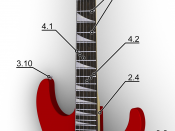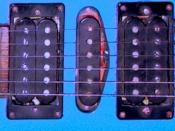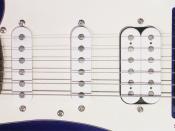Guitar Pickups
The electric guitar is part of the reason why pop music is what it is today. The electric guitar would be a useless hunk of materials without one thing; the guitar pickup.First a pickup is technically called a transducer. According to Encarta online, a transducer is "(a) device that converts energy: a device that transforms one type of energy into another, for example, a microphone, a photoelectric cell, or an automobile horn". Actually it is an electromechanical transducer, which converts the tones produced by the string vibration into electrical impulses. The frequency of the electrical impulses is identical to the frequency of the vibrating strings.
A pickup is generally made of two things; a coil of insulated copper wire and a magnet. The magnet magnetizes the strings of the guitar. When the strings vibrate by playing them, the vibration causes the magnetic field, or the flux field, to move along with the strings.
The motion of the magnetic field creates an alternating current within the pickup's coils. This current then travels from the pickup, through the output jack, through the cable and finally to the amp where current is produced in the form of sound.
The anatomy of a guitar pickup is actually very simple.
Shown in the gray is the permanent magnet, once again, according to Encarta online "(a) Permanent magnet, remaining magnetic: a magnet that retains its properties after the magnetizing force has been removed from it. Permanent magnets are used in loudspeakers and small motors." Shown in the light gray are the pole pieces, which are magnetized by the magnet and in its turn magnetize the string. In the orange is the copper wire. The copper wire, as was previously stated, is the conductor for the alternating current. Finally in the black is the...


